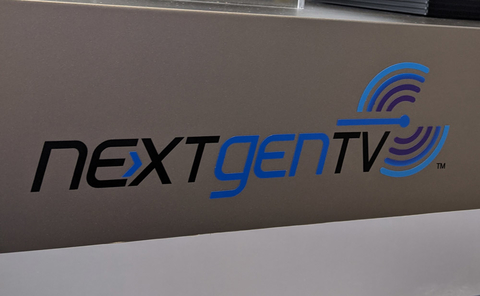10 Stations Coordinate in Houston To Launch NextGen TV
Largest group to make the switch since transition started last year.

Programming from 10 stations in Houston started being broadcast using the new NextGen TV format on Thursday.
That represents the largest number of stations that have made the switchover at one time since the industry began its conversion to the new ATSC 3.0 technology in 2020.
Houston is the 35th market with NextGen TV signals. Pearl TV, which is coordinating the switchover, expects NexGen TV to reach 34% of TV households by the end of the year and 85% by next summer.
Also: ATSC 3.0: Everything You Need to Know About the New Broadcast Standard
Because of the large number of stations involved, two of the stations are sending out NextGen signals.
The NextGen signal can carry a large number of programming streams and in most markets, one ATSC TV broadcaster is sufficient to cover a market. The other stations in the market team up to continue to broadcast ATSC 1.0 signals that can be received by older sets so that viewers don’t lose access to programming.
Two stations have been broadcasting in ATSC 3.0 in Phoenix since July, when NextGen TV expanded to 11 stations.
Broadcasting & Cable Newsletter
The smarter way to stay on top of broadcasting and cable industry. Sign up below
As stations start broadcasting in 4K, some markets might need three stations broadcasting in ATSC 3.0, said Anne Schelle, managing director of Pearl TV, which coordinates the NextGen TV launches.
In Houston, the participating stations are owned by Fox, Nexstar media Group, Univision, ABC, Graham Media Group, Tegna, NBCUniversal and the University of Houston.
NextGen TV provides better picture and sound clarity and access to internet content. The signal will also power additional digital services, which are now in the test phase.
Also: NextGen TV Being Used To Deliver Remote Learning in Washington, D.C.
“Houston will now get the most out of live news, events, and sports programming, as NextGen TV merges over-the-air antenna TV with the internet, enhancing its information and entertainment value,” said Ralph Rendon, VP of creative services and programming for KRIV/KTXH, the Fox -owned duopoly in Houston. “Through a combined effort of investment, meeting critical deadlines, and deployment of powerful new technologies, we’re able to provide a better and more engaging audio and video experience for our viewers.”
“This launch took an extraordinary amount of collaboration among the 10 TV stations involved and is a clear demonstration of the entire industry’s commitment to NextGen TV,” added Brett Jenkins, executive VP and chief technology officer for Nexstar Media Group. “Viewers will quickly notice the brilliant video and improved audio delivered by NextGen TV. But along with these enhancements come important upgrades in broadcasters’ ability to provide new customer experiences and services, allowing us to explore new business opportunities to meet the challenges of today’s evolving digital world.”
Schelle said the group’s holiday campaign promoting NextGen would be running in Houston.
More new NextGen TV markets are coming, Schelle said, with Washington, D.C., on the horizon.
“We’re getting really good at moving markets,” she said. The planning for Houston started only a few months ago. “It’s a pretty robust over-the-air market. I think it will be a great NextGen market.”
The transition will speed up as more TV set makers start making lower-price models with ATSC 3.0 tuners, she said. At this point LG Electronics, Samsung and Sony make NextGen sets, with Sony offering the lowest-priced model at $549.
Schelle expects more manufacturers to unveil mass market sets at the Consumer Electronics Show in January.
“That’s when we really start to scale,” she said. ■
Jon has been business editor of Broadcasting+Cable since 2010. He focuses on revenue-generating activities, including advertising and distribution, as well as executive intrigue and merger and acquisition activity. Just about any story is fair game, if a dollar sign can make its way into the article. Before B+C, Jon covered the industry for TVWeek, Cable World, Electronic Media, Advertising Age and The New York Post. A native New Yorker, Jon is hiding in plain sight in the suburbs of Chicago.

